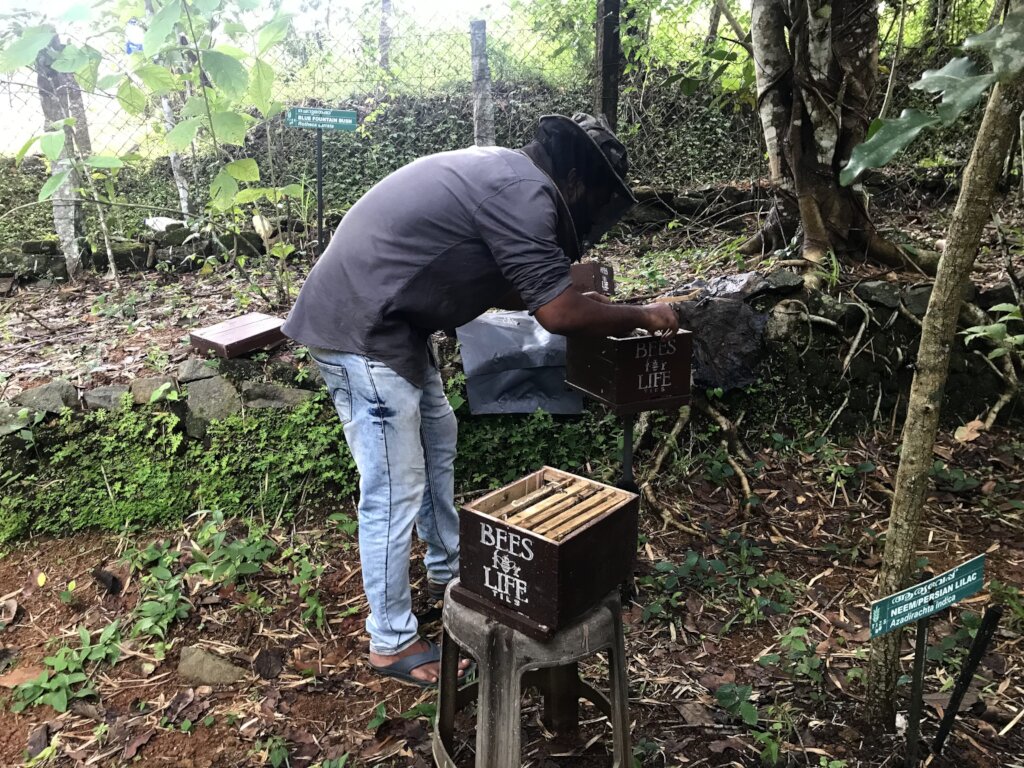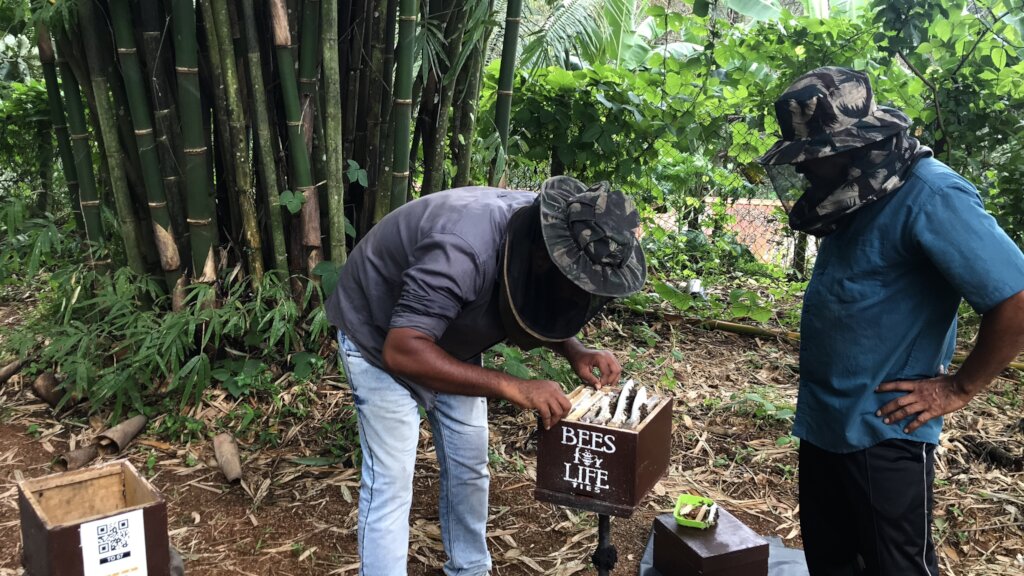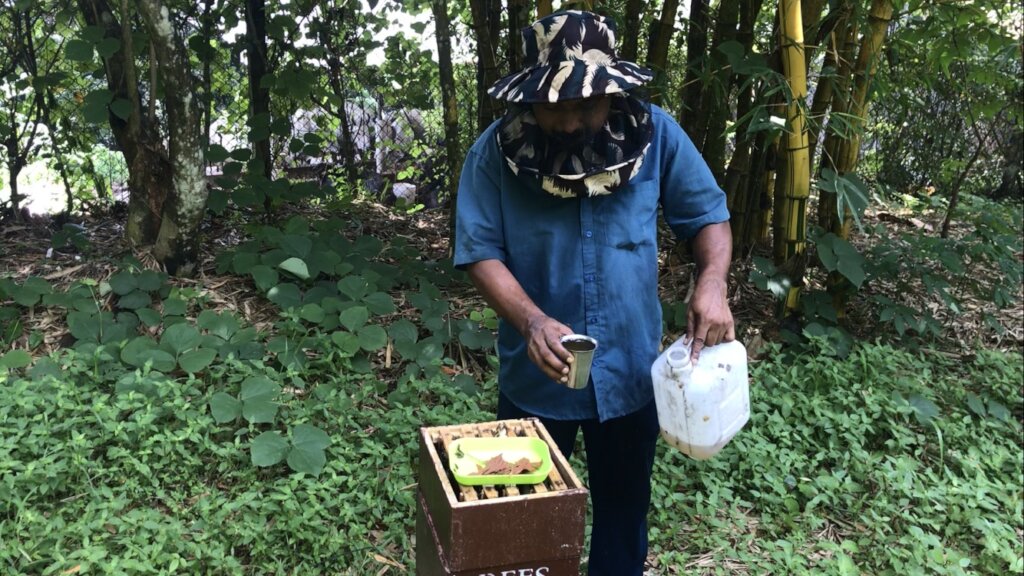By Sarath Babu N B | Project Leader
India, one of the megadiverse countries is rich in culture, traditions, biodiversity, etc. Alike many farming practices beekeeping is also one of the ancient farming prevailing in India. India is an exclusive country that habitats bee species like Apis. Apis cerana indica, A. mellifera, A. dorsata, A.florea are some species found in India. Because of the varied climatic zones in India, there is a massive multiplicity of flora that supports beekeeping.
Kerala the southernmost part of India is also diverse due to the climatic patterns which are supported by the Western Ghats. Apis cerana indica is one of the rearable bee spp., in India. The honey bee hive consists of three castes, single-dominant queen, worker bees, and drone males. The productivity of fertile queen bees depends upon the amount of food the worker bees bring and the amount of brood space. The royal jelly-fed queen cells can be seen at the bottom of the comb in the form of a cow’s teat. The newly emerged queen bee will destroy the rest of the queen cells and find other queen bees. When it reaches its mature stage, that is when it gains strength and reproductive organs mature, it will leave the colony, and then mate with strong drones. So feeding and colony division have immense importance in maintaining a bee colony.
During monsoon season, it will be difficult for the forager bees to find nectar and pollen to fulfill their nutrient requirements. So inorder to support them the beekeepers used to feed them with sugar solution. As it is a dearth period of feed for the bees, our team is feeding them with sugar solution or sugar syrup once a week. . It is prepared by dissolving sugar in water. The colony that was fed, starts growing by September beginning. The colony division started at the beginning of September and will end by November. In Kerala, the nodular honey of rubber will be available by the end of January, so its preparations will begin by December. The field around the bee hives is also monitored now as it is raining over here, and dampness chances are more. Proper drainage is ensured at dampness-prone apiary sites.
The bees for Life project has expanded its beneficiaries to 10 and its active bee boxes to 200+. Each beneficiary was provided with ten bee colonies. The TIES team is regularly monitoring the hives twice a week for cleaning, feeding, and division. Our efforts to maintain these little wonders are getting stronger as the number of beneficiaries increases and many others is showing their interest in beekeeping. Expanding the beneficiary groups is our need as it will enable us to pass our vision to more people. Many of our beneficiaries who used pesticides and other harmful fertilizers rather than organic ones stopped using them as it harmful to the bees. It is a good sign of attitude change which is essential for the sustainability of the ecosystem.
The stingless bees (Tetragonula iridipennis) are another group of bees that produce honey with great nutritional and medicinal properties. Now we have added stingless bee farming too to our Bees for Life.
Project reports on GlobalGiving are posted directly to globalgiving.org by Project Leaders as they are completed, generally every 3-4 months. To protect the integrity of these documents, GlobalGiving does not alter them; therefore you may find some language or formatting issues.
If you donate to this project or have donated to this project, you can receive an email when this project posts a report. You can also subscribe for reports without donating.
Support this important cause by creating a personalized fundraising page.
Start a Fundraiser

